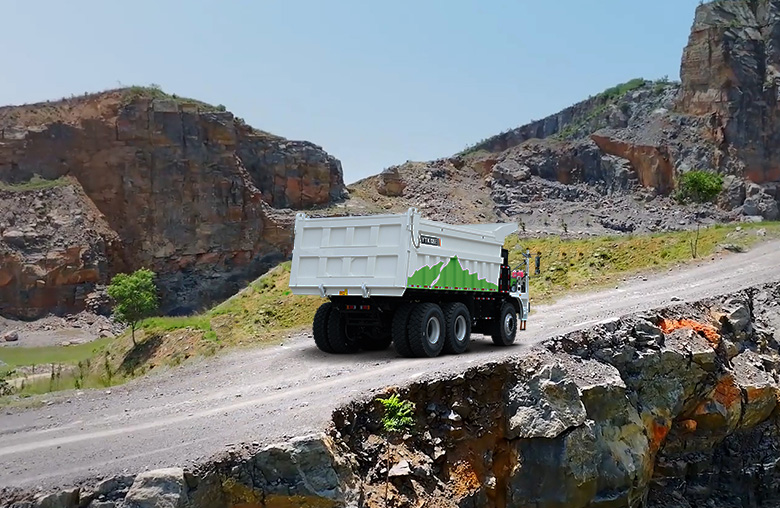wilson@powergentechnologies.co.ke | director@e-mobi.co | emobi.director@gmail.com
The Role of Renewable Energy in Mining

Energy
August 3, 2024
Renewable energy is becoming increasingly important in mining operations. This article explores how renewable energy sources are transforming the industry:
Solar Power
Integration of Solar Power: Solar power is a leading renewable energy source that is being integrated into mining operations to provide a reliable and sustainable energy supply. Solar panels are being installed on-site to harness the power of the sun, reducing reliance on fossil fuels.
- Specifications:
- Panel Efficiency: Up to 22%
- Installation Types: Ground-mounted, roof-mounted, and tracking systems
- Energy Storage: Coupled with battery storage systems for energy availability during non-daylight hours
- Benefits:
- Reduces operational costs by decreasing energy bills.
- Lowers greenhouse gas emissions, contributing to environmental sustainability.
- Provides a stable energy source, particularly in remote or off-grid locations.
- Use Cases:
- Suitable for remote mining operations with high solar exposure.
- Effective for powering site facilities, lighting, and auxiliary systems.
- Used in combination with other renewable sources to create hybrid energy systems.
Case Study: Explore a real-world example of a mining operation that has successfully implemented solar power, detailing the project’s impact on energy costs and environmental performance.
Wind Energy
Harnessing Wind Energy: Wind energy is another crucial renewable resource for mining operations. Wind turbines convert the kinetic energy of wind into electricity, which can be used to power mining activities.
- Specifications:
- Turbine Capacity: Ranges from 1 MW to 5 MW per turbine
- Turbine Height: Typically 80-120 meters
- Energy Output: Depends on wind speeds and turbine efficiency
- Benefits:
- Provides a consistent and reliable energy source, especially in windy regions.
- Reduces dependence on diesel and other non-renewable energy sources.
- Can be combined with solar power to create a hybrid renewable energy system.
- Use Cases:
- Ideal for mining sites located in areas with strong and consistent wind patterns.
- Useful for powering large-scale mining operations and processing facilities.
- Can support off-grid operations where traditional energy infrastructure is lacking.
Case Study: Highlight a mining project where wind energy has been effectively utilized, including details on energy savings, emissions reductions, and operational benefits.
Hydropower
Utilizing Hydropower: Hydropower harnesses the energy of flowing water to generate electricity. This renewable energy source is being explored for its potential to provide consistent and large-scale energy for mining operations.
- Specifications:
- Plant Types: Run-of-river, reservoir, and pumped storage
- Capacity: Varies from small-scale plants to large hydroelectric facilities
- Efficiency: Typically high, with potential for 70-90% energy conversion
- Benefits:
- Provides a reliable and steady source of energy.
- Can be integrated with other renewable sources to balance energy supply.
- Reduces reliance on fossil fuels and lowers operational emissions.
- Use Cases:
- Suitable for mining operations near rivers or other water bodies.
- Effective for powering energy-intensive processes and equipment.
- Can support mining communities with additional renewable energy resources.
Case Study: Describe a successful implementation of hydropower in a mining operation, focusing on the technical aspects, energy production, and environmental impact.
Hybrid Energy Systems
Combining Renewable Sources: Hybrid energy systems combine multiple renewable energy sources to create a stable and reliable power supply. These systems integrate solar, wind, and hydropower to meet the diverse energy needs of mining operations.
- Specifications:
- Integration Types: Hybrid systems can combine solar, wind, and hydropower with energy storage solutions.
- Energy Storage: Batteries or pumped storage to manage supply and demand fluctuations.
- Control Systems: Advanced software for optimizing energy use and managing multiple sources.
- Benefits:
- Balances the variability of individual renewable sources, providing a more stable energy supply.
- Reduces overall dependence on fossil fuels and minimizes environmental impact.
- Enhances energy security and reliability for mining operations.
- Use Cases:
- Ideal for large-scale mining operations with diverse energy needs.
- Effective for operations in areas with variable renewable resources.
- Suitable for integrating renewable energy into existing power infrastructure.
Case Study: Provide an example of a mining site that has successfully implemented a hybrid energy system, including details on the energy mix, operational benefits, and sustainability achievements.
Energy Storage Solutions
Advanced Energy Storage: Energy storage solutions are crucial for managing the intermittent nature of renewable energy sources. Batteries and other storage technologies help ensure a consistent and reliable energy supply.
- Specifications:
- Battery Types: Lithium-ion, flow batteries, and solid-state batteries
- Storage Capacity: Varies from small-scale systems to large grid-scale installations
- Charging Time: Depends on battery technology and system design
- Benefits:
- Stores excess energy generated during peak production times for use during low production periods.
- Enhances the stability and reliability of renewable energy systems.
- Reduces the need for backup fossil fuel power generation.
- Use Cases:
- Suitable for integrating with solar and wind energy systems to ensure continuous power supply.
- Effective for balancing energy supply and demand in remote or off-grid mining operations.
- Used to provide backup power and improve energy security.
Case Study: Highlight a project that has successfully integrated energy storage solutions with renewable energy sources, focusing on the impact on energy reliability, cost savings, and operational efficiency.
Policy and Regulatory Considerations
Navigating Policies and Regulations: Understanding and complying with policies and regulations related to renewable energy is essential for successful implementation. This includes environmental assessments, permitting, and compliance with local and national regulations.
- Tips:
- Stay informed about relevant regulations and policies in the region where mining operations are conducted.
- Engage with regulatory bodies early in the project planning process to ensure compliance.
- Seek incentives and support programs for renewable energy projects offered by governments and organizations.
Case Study: Provide an example of how a mining company successfully navigated regulatory challenges related to renewable energy projects, including details on compliance, permits, and government support.

Request a Call Back
We are committed to delivering cutting-edge technologies that minimize environmental impact while maximizing operational performance.

